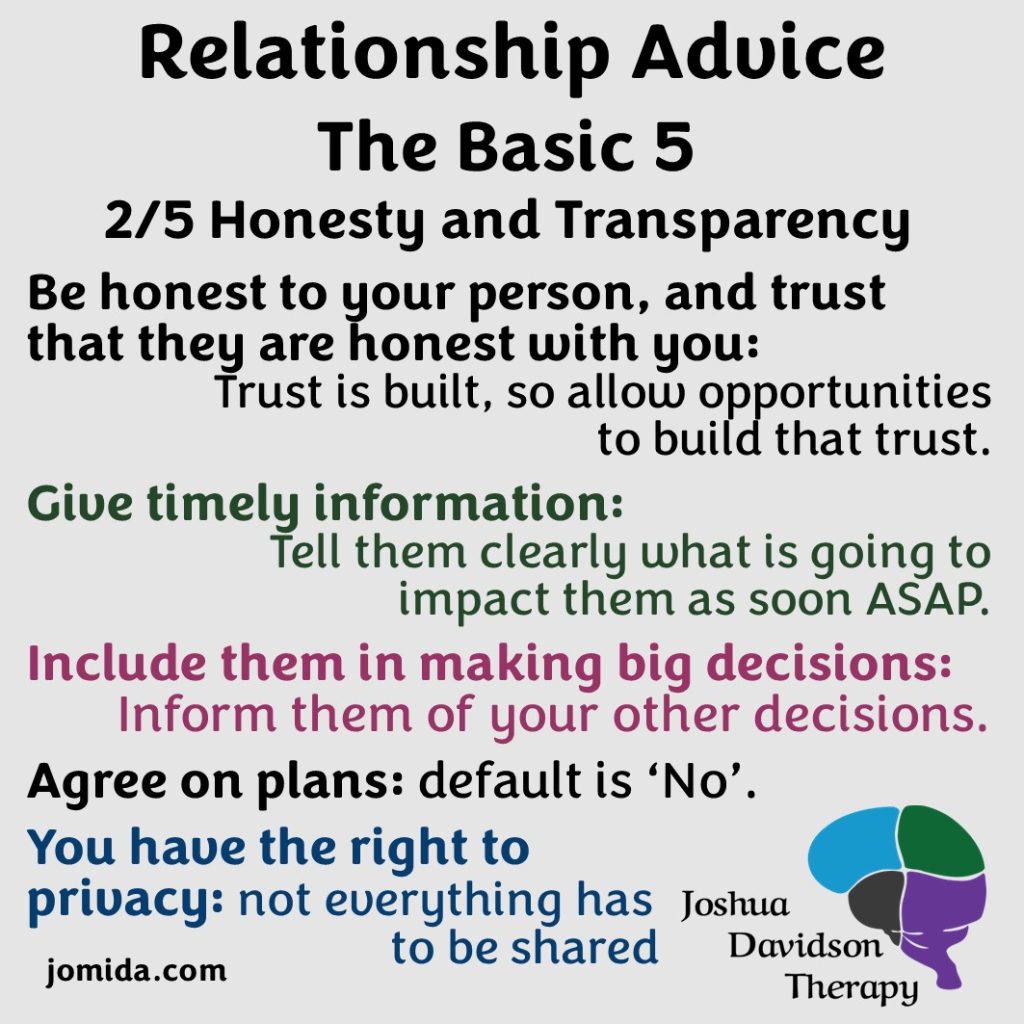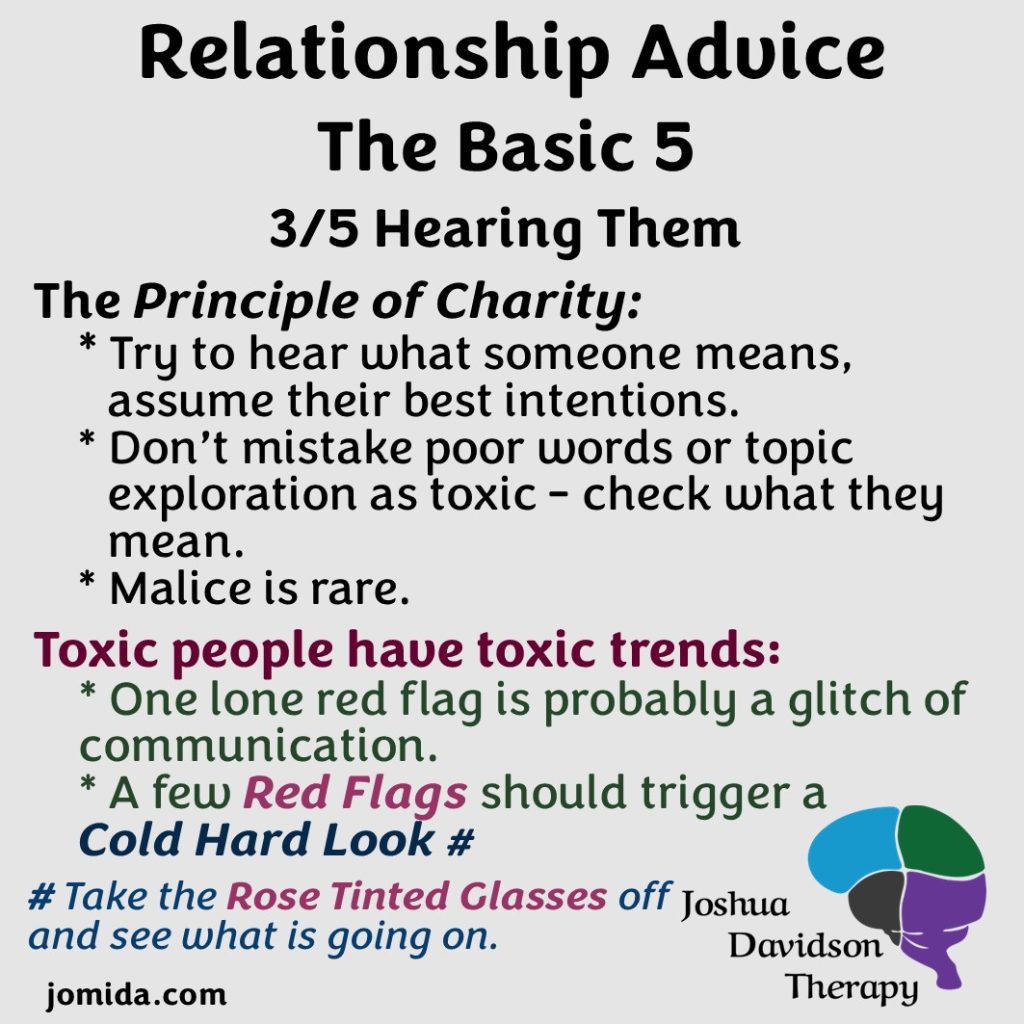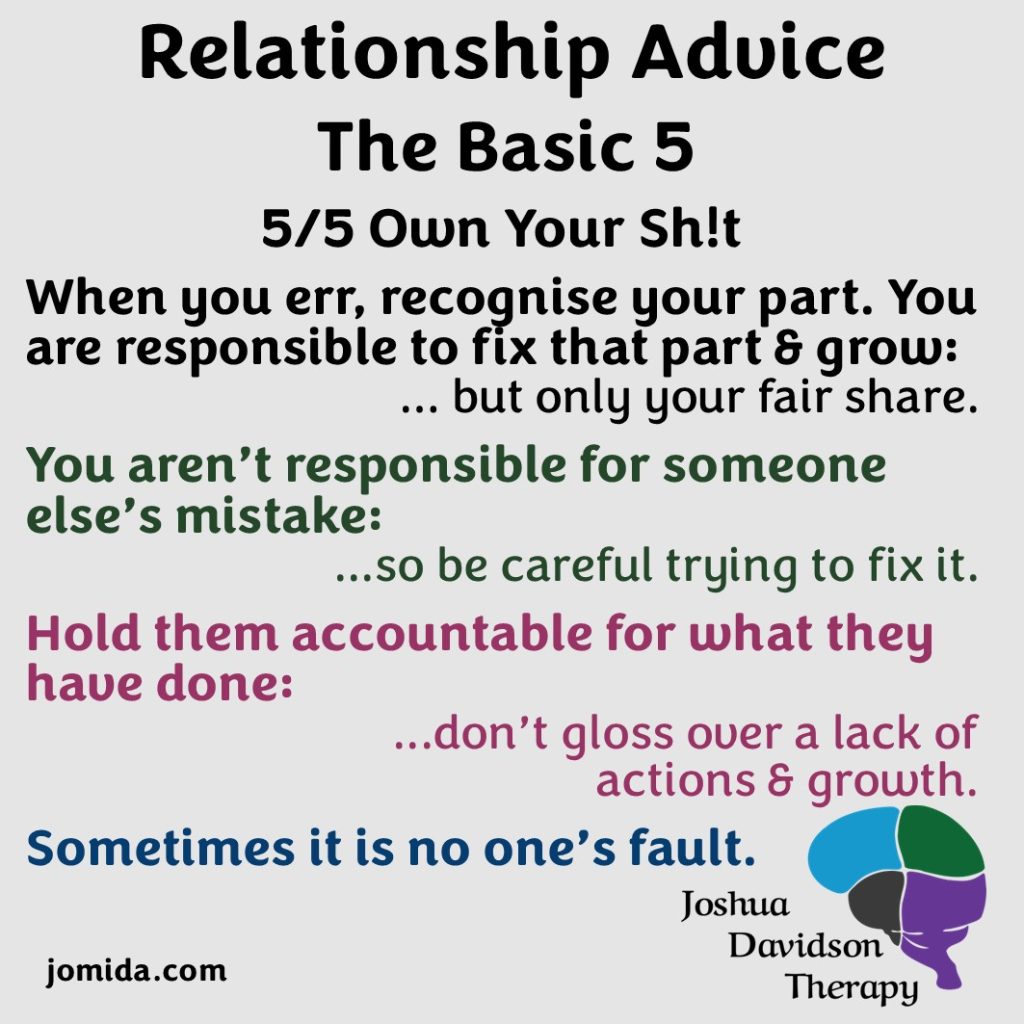Humans are social creatures. We survive better in groups of like minded, cooperative people. When we form bonds with people who are not cooperative, like minded or communal, mistaking them as friends, we do poorly. Sometimes the modelling we have for how to be a good person is based on poor examples of cooperative and supportive people – that is, they weren’t. To address this, I present this basic guide.
Breaking Up
If a relationship is not good for you, you don’t have to stay in it – you can leave. There is a lot of public and social pressure to stay in a relationship, and I want to let you know that you aren’t required to. While it is not a good trend to leave over a minor disagreement, when the topic is major to you, or the disagreement is not resolvable, then it is fine to move on. There are over 8 billion people on this planet – why do you have to stick with this person?
We have an extensive exploration around what toxic looks like in our Conflict pages, further advice on how to spot toxic relationships in the Traffic Light System, and Escaping Abuse.
- It is okay to divorce:
- Breaking up is okay
- Starting over is okay:
- Being alone is okay.
- It is not okay to stay in abuse:
- Don’t “stay for the kids”.
- Don’t accept poor treatment.
- “I don’t have a choice” is an illusion created by the abuser.

1 Love
We may forget to show the person we are with that we love them. Love doesn’t have to be a romantic and intimate relationship. Any interaction with someone over time becomes a relationship, and we want to keep positive relationships positive. That is, you can have a relationship with your spouse, friend, fellow worker, or colleague. We will feel different kinds of love for people, such as romantic, intimate, affection, friendship, and or platonic.
While the science behind love languages is not very good, it is still a good system to consider how people show and receive love. We may be trying to express our positive feelings to someone in a format that doesn’t mean much to them, but does mean the world to ourselves.
Love Languages:
- Words of affection
- Gifts
- Spending Time
- Actions
- Physical affection
- Acts of Service
When you do see someone showing you love, try to acknowledge it. Again, love doesn’t have to mean more than that they appreciate you.
If someone is attempting to show you love that you don’t appreciate, or that you feel is inappropriate, you do need to address that. A relationship should be good for all parties, or there is something wrong with it.

2 Honesty and Transparency
A good relationship is built on trust, and trust is grown. It is important to give the relationship some room to test and demonstrate trust. Trust can’t exist without honesty and transparency.
That doesn’t mean that you have to tell them everything – you do have the right to privacy, so long as those things are not harmful to them.
Honesty is about telling them what is important to you and important to them in a timely fashion. It is about telling the truth to appropriate questions and volunteering relevant information. This creates transparency and builds trust.
When mistakes are made, because of the trust that is build, it is recognised as an anomaly and thus recognised as a mistake and not malice.
Big decisions should be discussed with your significant close people, especially if it will affect them. They should be given a chance to give you input and you may change your mind on your part if what they say. Plans that are going to affect you both should be discussed and agreed upon – as part of Consent, without agreement, the answer is “No”.

3 Hearing Them
We need not just listen to what someone says, we need to hear what they mean.
We all have had experiences of trying to tell someone something and it all goes horribly wrong. Perhaps we have said words that were not in accord with what we meant, or these words mean something different to them than they do to us.
That part you wish that they would forget what they have assumed you meant and just listened to what you are trying to say now? That is what this is about – except you are doing it for them.
A handy tool is the Principle of Charity. Using this, we try to hear what someone means – we assume their best intent and initially assume that if what we are hearing is not matching that, then perhaps there has been a communication error. We give them a chance to say it again, more clearly, while we put to the side our worry that what we think we heard is what they did mean.
The Principle of Charity relies on the person having earned trust by being generally a good person, or if a person is new to you, that you don’t know them well enough to have sufficient evidence that they are problematic.
Malice is rare.
Toxic people have toxic trends. That is, they tend to wave several red flags over time, not just have a single interaction that is a bit off. If someone’s behaviour is a bit off this one time, then likely they are having a bad day (Three Pillars Method) and this isn’t really them being toxic – unless it crosses certain lines that they can’t come back from. In which case you need to take a Cold Hard Look, where you take the Rose Tinted Glasses Off (more details in the Three Pillars Method).

4 Consistent Evolving Rules
What is good for the good is good for the gander: that is, the same relationship rule should be for both of you – unless there is a good specific condition for why that shouldn’t be the case, such as a gambling dependency making one of you not safe around money.
Rules in a relationship need to be clearly defined and explicitly made. That is, discussing what the rule does and doesn’t mean, checking that your working terminology is the same, and that you have both explicitly agreed to it. Implicit rules are unstated rules – assuming the other person views a relationship rule is not wise.
Rules evolve over time as situations arise that you didn’t expect, or you’ve both agreed that some of the earlier rules are really suitable anymore or needed anymore. Again, this needs to be explicit.
It is a red flag for rules to be inconsistent (keeps changing) or not homogeneous (same for both without a good explicit reason).

5 Own your Sh!t
“To Err is human” (err means ‘make an error’ or mistake). When you do, own your mistake, apologise and make amends where appropriate. Don’t duck your responsibility and be quick and humble about it.
Do not accept a share that is not your fair share of the problem created by your mistake. That is owning someone else’s sh!t.
You aren’t responsible for their mistake, so be careful about what part you plan in fixing it. If you do it for them, why? Are you their parent or guardian? What are they learning from you fixing it for them? Helping them to fix it means they fix it with your help, that is, they do the work (hopefully most of it).
We need to hold people accountable for what they have done until they have addressed the consequences of what they did and show that they have grown. If they shirk their responsibilities, or fail to grow from their experience, that is a red flag.
